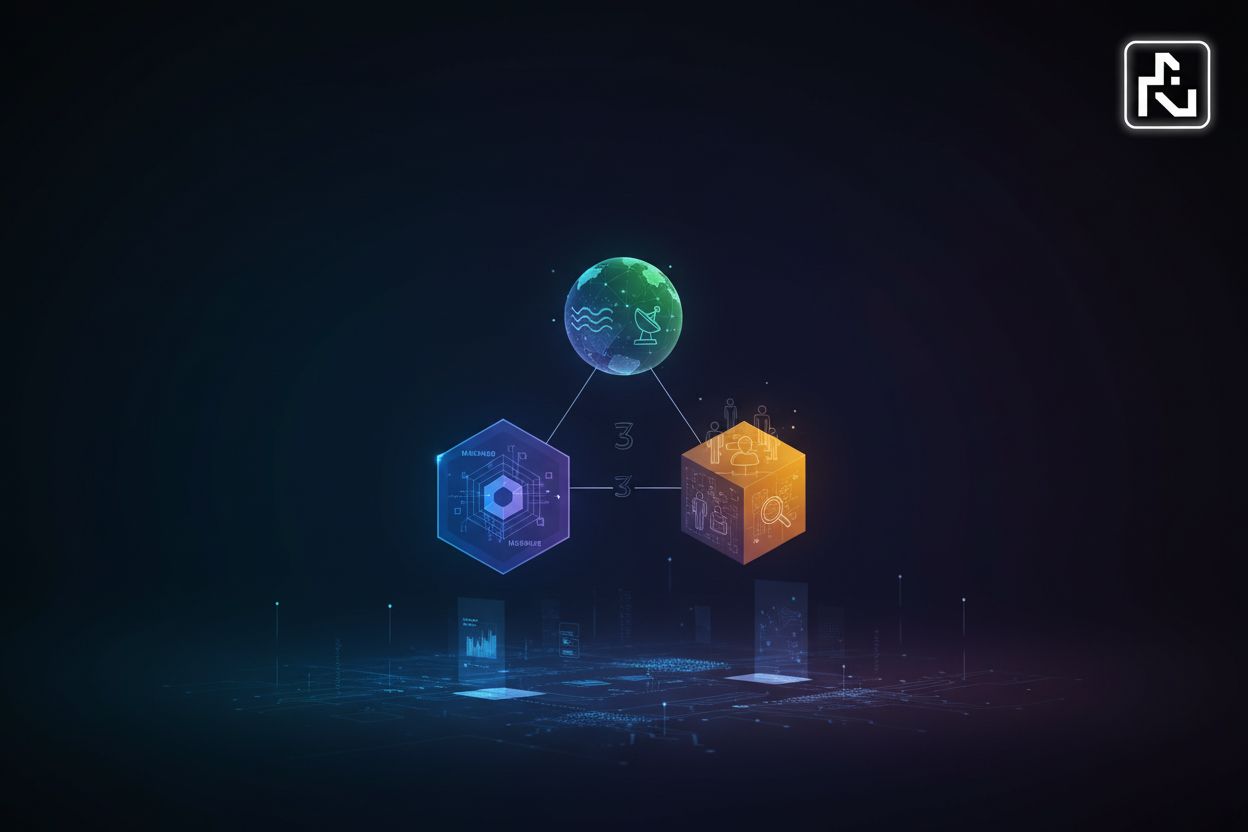Orchestrating Success: Digital Ecosystems as the Cornerstone of Modern Digital Strategy
TL;DR
Understanding the Digital Ecosystem Landscape
Digital ecosystems are transforming how businesses operate and compete. But what exactly is a digital ecosystem, and why should you care? Let's break it down.
A digital ecosystem is a network of interconnected IT resources. It includes suppliers, customers, partners, applications, and technologies that work together. The key to a successful ecosystem is interoperability, ensuring these components can communicate and function as a unit digital ecosystem.
- Unlike traditional linear supply chains, digital ecosystems are dynamic and collaborative.
- They allow organizations to control technologies and build automated processes.
- A well-defined digital ecosystem map is essential for a strong ecosystem digital ecosystem.
According to McKinsey, the pandemic accelerated the shift to digital ecosystems, with consumers increasingly relying on online services Ecosystem 2.0: Climbing to the next level. This shift highlights the need for companies to adapt and leverage these interconnected networks.
Now that we've defined digital ecosystems, let's explore the shift from traditional value chains to these interconnected systems.
The Pillars of Digital Ecosystem Orchestration
Digital ecosystems are not built on technology alone; they thrive on strong relationships. By prioritizing collaboration and shared goals, organizations can create robust networks that drive innovation and deliver exceptional value. Let's explore the relational practices that underpin successful digital ecosystem orchestration.
Partnerships within a digital ecosystem must be built on a foundation of shared vision. Everyone needs to be working towards the same definition of success. When all participants understand and agree on the goals, collaboration becomes more effective.
- Open communication is crucial for preventing misunderstandings and keeping everyone aligned.
- Clearly defined objectives make it easier to measure progress and make adjustments as needed.
Each participant should understand their role and the expectations, including who is responsible for what. Clear roles allows partners to contribute with confidence and minimises overlap.
- Well-defined responsibilities ensure accountability and prevent critical tasks from falling through the cracks.
- Regular check-ins can help address any confusion or conflicts that arise.
Transparent data sharing is a must for building trust and facilitating informed decision-making. When data flows freely, partners can identify opportunities for improvement and address challenges proactively.
- Secure data protocols protect sensitive information while enabling seamless exchange.
- Dispute resolution mechanisms should be in place to handle any disagreements that arise.
As companies foster robust relationships with their partners, they can leverage the power of resource integration.
Technology as the Enabler: Platforms and Tools for Orchestration
Can technology platforms help orchestrate digital ecosystems? Absolutely. Let's explore how various platforms and tools facilitate collaboration, streamline data flows, and foster engagement within these interconnected networks.
Ecosystem Orchestration Platforms (EOPs) are central to managing modern digital ecosystems. These platforms help create and manage ecosystems by providing a centralized hub for participants to collaborate and share resources What is an ecosystem orchestration platform?.
Key features of EOPs include:
- Collaboration tools: Messaging, video conferencing, and file sharing promote effective communication.
- Data analytics: Tools to analyze and display data from various sources to understand ecosystem performance.
- Ecosystem governance: Policy management, risk assessment, and compliance monitoring to ensure smooth operations.
For example, Innover's LEAP® platform accelerates the entire data journey, from strategy to real-time visualization. It offers pre-built models and ready-to-deploy AI solutions The Rise of Data Ecosystems: Orchestrated by Digital Engineering.
DataOps brings agility to data management, enabling real-time, automated data flows across systems. This methodology integrates cloud platforms and machine learning models, ensuring data moves seamlessly from collection to analysis The Rise of Data Ecosystems: Orchestrated by Digital Engineering. AI-powered data profiling and quality management frameworks continuously monitor data integrity, identifying and correcting errors in real-time.
Collaboration tools are essential for fostering engagement within digital ecosystems. These tools facilitate communication and knowledge sharing among ecosystem participants digital ecosystem.
Examples include:
- Project management tools: Agile software development tools, task management software, and issue tracking systems.
- Communication tools: Email, file sharing, instant messaging, and video conferencing.
- Knowledge management platforms: Intranets and wikis for storing and sharing information.
By leveraging these technologies, organizations can effectively orchestrate their digital ecosystems. Next, we'll explore the critical role of metrics in evaluating the success of a digital transformation.
Overcoming Challenges and Ensuring Ecosystem Health
Digital ecosystems face numerous hurdles, but addressing them ensures long-term viability. Successfully navigating these challenges requires a proactive approach.
Mapping your digital ecosystem is crucial. A digital ecosystem map helps visualize all digital tools and platforms used, ensuring all dependencies are identified and controlled digital ecosystem.
- Document processes.
- Show data transfers.
- List system users.
Ecosystems present technical, legal, and business-related challenges.
- Service orchestration and monetization are key.
- Customer engagement and data management must be prioritized.
- Balance innovation with data security and compliance.
Regular audits are essential for maintaining ecosystem health. These audits should evaluate governance models and roadmaps digital ecosystem. Assess whether the ecosystem aligns with the company's vision and goals.
Understanding these challenges is the first step toward measuring digital transformation success.
Strategies for Brand Managers and CMOs: Leveraging Ecosystems for Growth
Digital ecosystems offer brand managers and CMOs unprecedented opportunities for growth. But how can you effectively leverage these ecosystems to maximize impact?
Here are key strategies to consider:
- Build a Strong User Base: Position your brand as a market leader to attract both customers and partners.
- Expand Geographic Scope: Collaborate across diverse regions to create a global footprint.
- Rethink Business Models: Reevaluate processes and governance to embrace digital transformation.
Ecosystems thrive on collaboration. By fostering an open culture and creating compelling value propositions, you can attract diverse partners.
Now, let's explore how organizations are overcoming challenges and ensuring ecosystem health.




